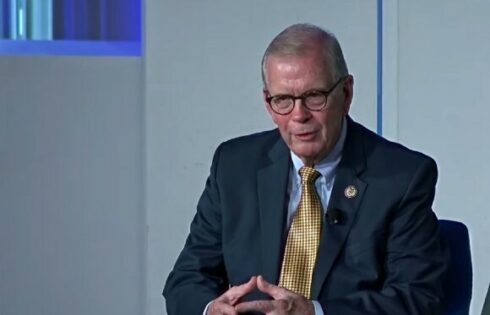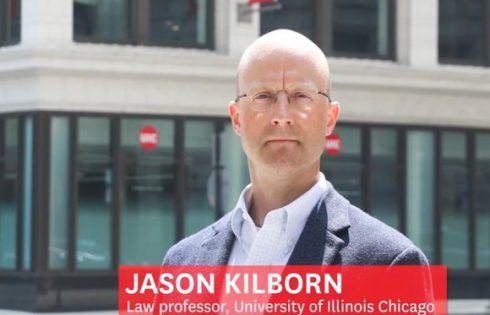
‘Greater assurance’ that victory for accusers ‘will not be overturned’ for lack of due process
If you’re going to challenge an agency regulation, you’d better show how it violates legal precedents.
New York City’s board of education and the state of New York failed miserably in that regard, not even coming close to persuading a federal judge to either halt or push back the Friday effective date of the Department of Education’s Title IX regulation on campus sexual misconduct proceedings.
In a 46-page opinion Sunday, Judge John Koeltl said the plaintiffs overreached in arguing the regulation was “arbitrary and capricious” in violation of the Administrative Procedure Act, which governs federal rulemakings. The most the state and city can argue is that they “would have drawn lines differently from those drawn” in the regulation, he wrote.
The judge notes it took until the Trump administration for the federal government to actually define sexual harassment as “unlawful sex discrimination under Title IX” in regulation, as opposed to facially nonbinding guidance. That was the format chosen by the Obama administration, and as a result, easily junked by its successor.
Education Secretary Betsy DeVos* gave educational institutions nearly three times longer to prepare than the APA requires – 87 days, putting the effective date in late summer and considering competing burdens from COVID-19, Koeltl notes.
The regulation’s departure from previous departmental guidance – such as the requirement for live hearings and cross-examination in college proceedings, and the “actual knowledge” trigger – is not sufficient to bring down the regulation, he concluded.
Its interpretation of “program or activity” – the conditions under which schools are responsible for enforcing Title IX – is fully in line with Supreme Court precedent in Davis, the controlling decision for student-on-student sexual harassment, Koeltl wrote. Davis “confines the scope of prohibited conduct based on the recipient’s degree of control over the harasser and the environment in which the harassment occurs.”
Criticism that accused students get preferential treatment in the regulation is contradicted by the department’s confirmation that it lets “either party equally” challenge a finding “on the basis of procedural irregularity,” the judge said.
He noted the department received public comments relaying “personal experiences” with discriminatory application of grievance procedures toward both accusers and accused. Koeltl’s own federal appeals court, the 2nd Circuit, has also ruled that “unfair grievance procedures against a respondent [accused student] can amount to sex discrimination.” Title IX itself is silent about how to design grievance procedures, he noted.
The plaintiffs’ five-point challenge under the “arbitrary and capricious” test also falls flat. The 2001 guidance upon which they rely expressly notes that its “severe, persistent, or pervasive” standard for is consistent with the Supreme Court’s “severe, pervasive, and objectively offensive” standard from Davis, Koeltl said.
The regulation is also not a carbon copy of Davis, he emphasized, pointing to several areas of harassment that do not require the three-part Davis test: quid pro quo harassment, sexual assault, dating violence, domestic violence, and stalking, as defined under the Clery Act and Violence Against Women Act.
MORE: 9th Circuit reinstates anti-male bias lawsuit against ASU
The judge pointed to comments the department received warning that the “or” test from the 2001 guidance could burden First Amendment rights. The three-part Davis test, on the other hand, “covers purely verbal harassment” which reasonably requires “a level of severity, pervasiveness, and objective offensiveness.”
Koeltl deadpanned that citing Supreme Court authority to justify a regulation “could hardly be characterized as ‘arbitrary or capricious.'”
The actual-knowledge standard that triggers enforcement, and the specified roles it covers, also has a “rational connection” to public feedback on the proposed regulation, he continued: “The DOE believed that the new definition of notice provided clarity as to when recipients [of federal funding] were required to investigate,” as opposed to the vague language in prior agency guidance.
The plaintiffs are also wrong to claim that the regulation “allow[s], or even demand[s] that schools ignore sex-based conduct” that interferes with a student’s education, Koeltl said: “[T]he Supreme Court specifically fashioned the standard for monetary liability for violations of Title IX to match the standards of Title IX’s administrative enforcement scheme.”
The judge was perhaps the most curt when analyzing whether the department had sufficiently “explain[ed] its changed position,” especially considering that “longstanding policies may have engendered serious reliance interests” from schools.
Koeltl quickly summarized the department’s explanation for its changes, and concluded they “were adequate to satisfy the deferential standard of review under the arbitrary and capricious standard.”
It’s also not within his discretion to pick and choose between competing harassment standards, the judge said – the old “hostile environment,” which the plaintiffs argue is required, versus the new, individual-focused “equal access to education.” The department has the authority to choose “a more focused standard based on Supreme Court authority” (Davis).
Koeltl also said the feds made numerous distinctions in requirements between K-12 and postsecondary schools, such as the broader notice requirements for the former, showing it “plainly considered” the relevant circumstances in each venue.
Contrary to the plaintiffs’ assertions, it’s not even clear that there’s enough data for the department to do an accurate and comprehensive cost-benefit analysis to justify the regulation, the judge said. The feds pointed to the “lack of high quality, comprehensive data on Title IX enforcement and incidents of sexual harassment and assault,” making them reliant on “legal and policy considerations” rather than cost-benefit analysis in choosing the regulation’s provisions.
In order to stay within Title IX’s framework, the department avoided considering costs – such as dropping out due to harassment – that arise outside of a school’s response to misconduct.
Continuing his past reliance on Supreme Court precedent over the plaintiffs’ declarations of what the law really means, Koeltl said it’s irrelevant that the regulation provides a different harassment standard for Title IX than for Title VI (“race, color, or national origin”).
MORE: 7th Circuit rebukes Purdue for hiding evidence from accused student
The Supreme Court “has declined to require uniformity when resolving ambiguities in identical terms even within the same statute,” saying that the same words may vary in meaning depending on the law’s purposes: “The plaintiffs cite
to no case law that requires agencies to promulgate identical rules to implement the provisions” of the two harassment statutes.
The plaintiffs can’t even point to prior departmental guidance to argue that the regulation violates federal student privacy law, the judge notes: It “interpreted Title IX to override FERPA in the event of a direct conflict.”
They simply disagree with the administration’s view that parents have the right to “inspect and review any witness statement that is directly related to the student” if related information about another student “cannot be segregated and redacted without destroying its meaning.” They count as an “education record” of both accuser and accused.
Even the sections the plaintiffs say are not a “logical outgrowth” of the proposed regulation from 2018 are not a basis to halt the entire regulation, Koeltl said, citing the regulation’s “severability” provisions. One of the disputed sections, on federal preemption of state law, is stated explicitly in Supreme Court precedent, he added.
The New York plaintiffs have not shown they will suffer “irreparable harm” simply by being forced to spend money on “amending policies and procedures, conducting training, hiring new staff, and analyzing potential legal conflicts” from the regulation.
Those are “ordinary compliance costs,” and “much of these costs should have been incurred already” given the pending effective date of the regulation, Koeltl wrote: New York City’s complaint about having to hire “ten additional staff” is dwarfed by its 135,000 education employees.
He also said nothing in the regulation “requires resources to be taken away from efforts to combat the horrific COVID-19 pandemic”:
The plaintiffs can choose to fund their compliance efforts from whatever appropriate budgetary source they choose, presumably from the same budgetary sources they have previously used for Title IX compliance efforts.
The department has shown good faith by conducting a “thorough analysis” of the 125,000 public comments it received and making changes in response, the judge said. It explains how it will “make processes equal” for accusers and accused, with “supportive measures” for the former and “a fair grievance procedure” preceding discipline for the latter:
Rather than harming students, the Rule has the potential to benefit both complainants and respondents by providing procedural guidance for grievance procedures. This process helps not only respondents but also complainants who are given greater assurance that if they prevail in the grievance proceeding, that result will not be overturned because the process did not comply with due process.
For shorter reads, check out the tweet summary by Brooklyn College Prof. KC Johnson, who chronicles Title IX litigation, and the Foundation for Individual Rights in Education’s summary, which notes three more lawsuits are pending against the regulation.
MORE: 3rd Circuit throws door open to anti-male bias lawsuits against universities
IMAGE: everything possible / Shutterstock.com
Like The College Fix on Facebook / Follow us on Twitter







Please join the conversation about our stories on Facebook, Twitter, Instagram, Reddit, MeWe, Rumble, Gab, Minds and Gettr.